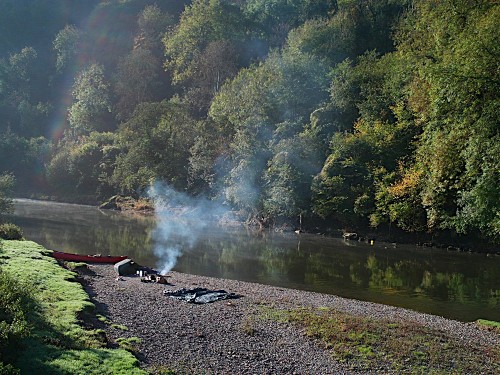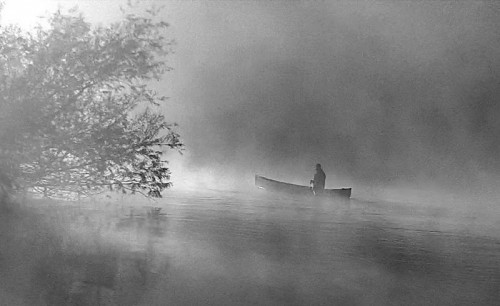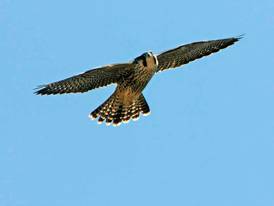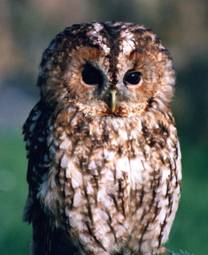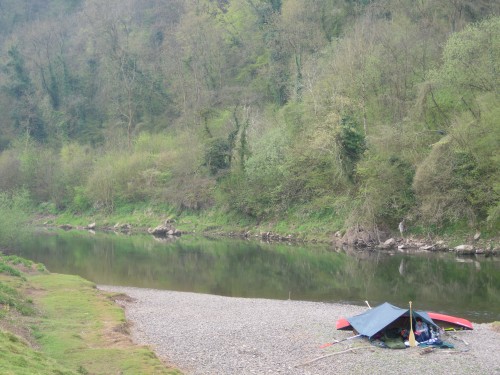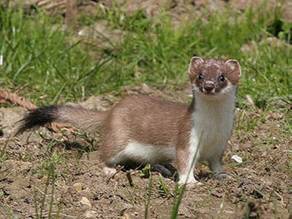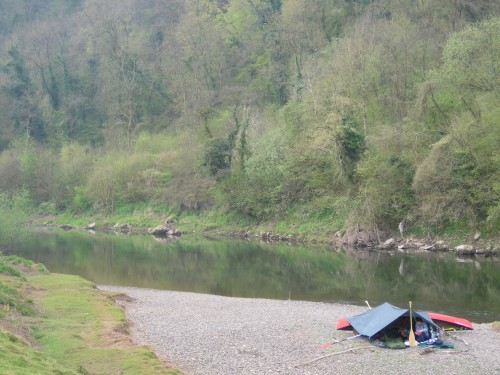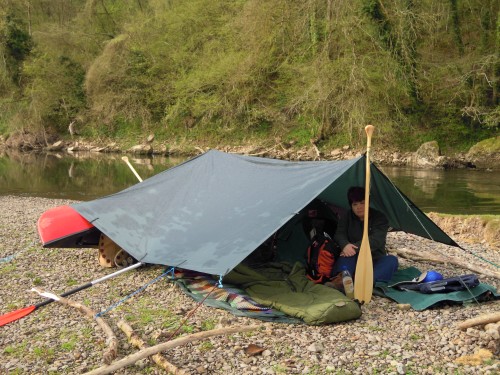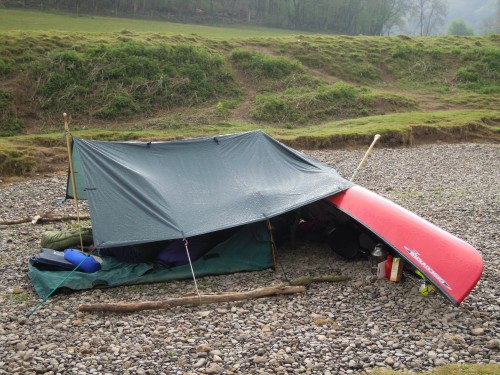A sudden down-turn in the temperatures in mid October didn’t put us off a planned canoe trip on the river Wye. We set off for a short trip with an overnight wild camp on the river, Autumn sunshine and the trees just beginning to turn, we had a brief shower once we got on the river, but sheltered under a huge oak tree, with acorns dropping all around us as the squirrels above were busy feeding before winter. There were a lot of pheasants around too, and we saw them scatter as the sound of a Goshawk called loudly from the tree just above us, something I’d never heard before – I still haven’t ever seen one of these elusive predators, even though the Wye valley and the Forest of Dean are one of the best places to see them, they are making a great comeback in recent years after being persecuted, like many birds of prey to the verge of extinction in the UK in the past. But the pheasants certainly know about them!
We canoed downstream in the most beautiful sharp autumn light late in the afternoon, the shower brought out the best rainbow I’ve ever seen, reflected in the river and reaching right across the sky. Arriving at our camp spot as dusk drew in, the temperature was dropping sharply, so with one strike from the firesteel on some birchbark and dry twigs gathered along the way we had a fire going, and set about organising the camp. With a bit of rain still in the air Hawkeye set up his usual tarp rig as a back-up, but we planned to sleep out until any rain came. In fact the sky cleared completely during the evening, but that meant the temperature really began to drop fast – with the fire roaring we were warm but a little apprehensive about how cold it would get during the night. The owls hooted all around the valley in the dark, and the sound of the fire crackling and the river running past made for a fantastic evening around the fire. We ate strips of rump steak on sticks over the flames, and big roast potatoes cooked straight in the embers – the best way: the ferocious heat in the embers cooks the potato much hotter than an oven, and really brings out the best sweet flavour, we both agreed that you need no more than potatoes cooked this way with some butter for a great camp meal. They were in about 40 minutes, then pulled out to cool: the surface turns to a kind of charcoal egg-cup, once cool you can hold that, break open the top and scoop out the soft potato inside, your hands get a blackened, but holy smoke it’s worth it!
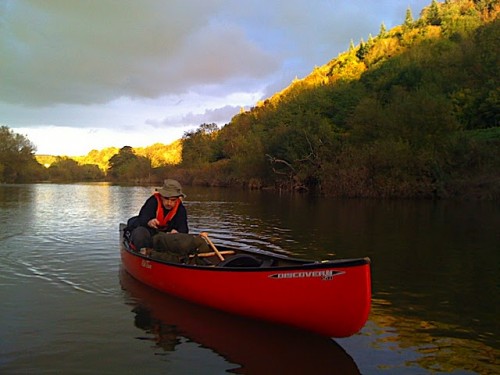
The stars were soon out, full moon rising too over the treeline, and later we retired to the swag and sleeping bags with the fire still providing plenty of warmth. I fell asleep with the freshening air, looking up at a billion stars, with the sound of the owls and the river, an unforgettable magical experience.
Sure enough during the night it got very cold: I pulled the canvas swag over my head to keep off the breeze, and slept soundly, perfectly warm and dry: still nothing better for me than an australian canvas ‘swag bag’ and sleeping out, no tent required. Worst case if you get heavy rain a small tarp over the top would do the trick, but unless you get heavy rain you can sleep right out there in the open, in comfort too.
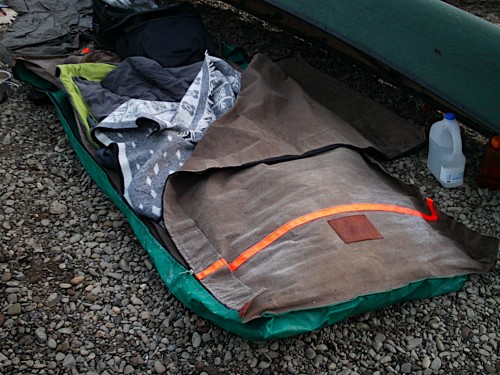
Hawkeye woke early, and got the fire re-started from the remains of last nights logs, then poked my swag with a stick to wake me so I wouldn’t miss the most beautiful morning scene on the river I’ve ever witnessed: the cold meant a thick mist was swirling around over the water, shifted around by a light breeze, the river and the forest around was stirring. H had the Kelly Kettle on too so I had no excuse but to jump up, get some clothes on quick and enjoy some hot tea by the fire, just watching the day begin. The cold was such that a thick frost had formed on most of our gear, and it felt like a winter trip rather then autumn! Warmed my hands on the fire as they were getting numb it was that cold, definitely sub-zero by one or two degrees.
After some coffee and hot porridge on the fire cooked in the trusty crusader mugs, we got into the canoes and pushed off to explore up river, paddling quietly through the swirling mist, the forest all around – a magical experience I’ll never forget.
So here’s the video of the trip… watch it full screen if you can, hope you enjoy it.




